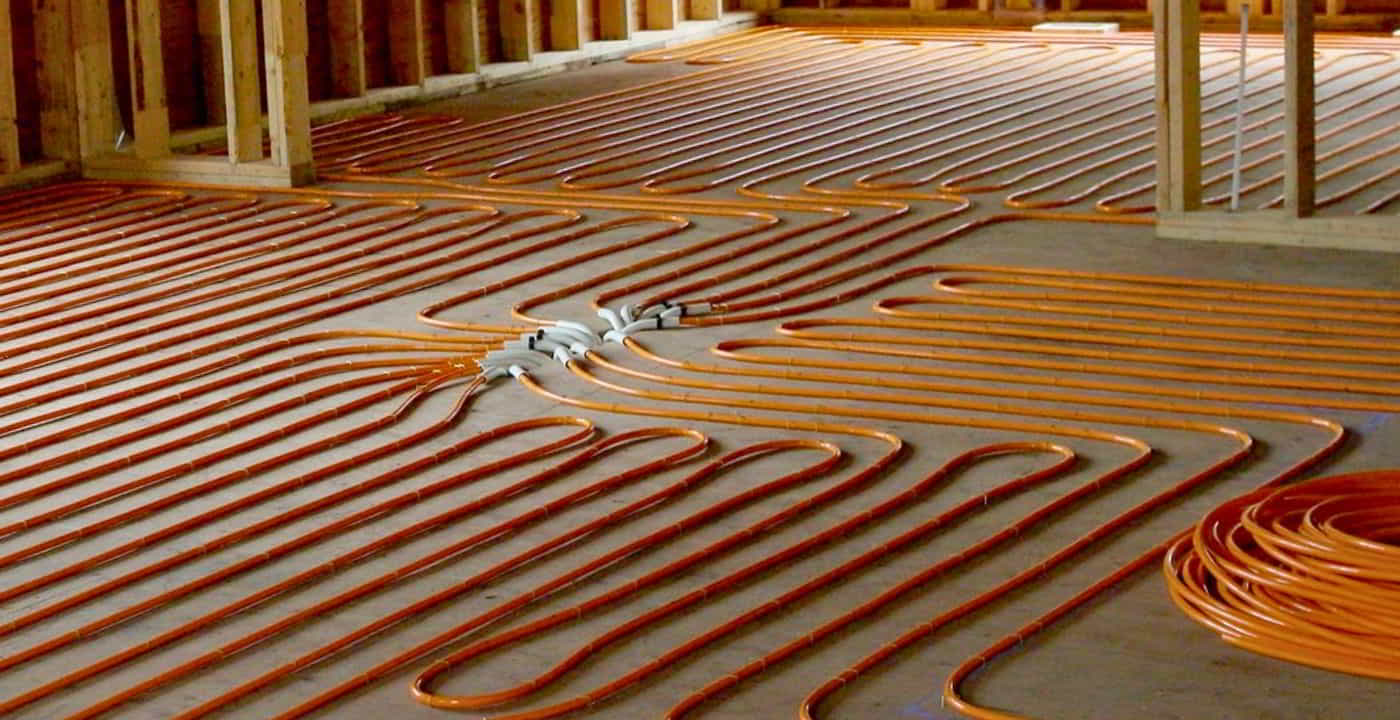Radiant floor heating has several benefits including silent operation, more comfortable warmth, and greater energy efficiency than traditional heating methods.
In this article, we examine the two types of radiant floor heating, electric and hydronic, and provide you with key tips and expert information to help determine which system will be best for your home.
Key Takeaways
- Independent reviewers have an overwhelmingly positive experience using HeatTrak mats.
- HeatTrak mats are highly effective and reliable even in regions with regular, heavy snowfalls.
- Most HeatTrak mats cost only a few cents an hour to run based on the current average cost of electricity in the USA.
Understanding the Different Types of Radiant Floor Heating
Electric Radiant Floor Heating Systems

These systems utilize electric cables or mats installed under the floor surface to generate heat.
They are straightforward to integrate into existing properties without needing extensive renovations.
Electric radiant floor systems are also often preferred for smaller areas due to their ease of installation and the minimal disruption they cause.
Hydronic Radiant Floor Heating Systems (Hot Water Radiant Floor Heating Systems)

These systems circulate heated water through tubing laid beneath the floor.
The heat from the water is then transferred to the floor surface and rises evenly throughout the room.
Hot water floor heating systems are much more complex than electric systems.
Consequently, the installation process is much more disruptive and the upfront costs are usually significantly higher, often double the cost of installing an electrical system.
Choosing the Right Type of Floor Heating for Your Home
Okay, what’s the difference between having an electric or a water-based system in your home?
The old wisdom used to be that if you are just looking to install underfloor heating in a single room or just a couple of rooms or zones, you should go with an electric system.
On the other hand, if you are looking to install radiant floor heating throughout the entire property, particularly in new-build homes, you should opt for a hydronic system.
Nowadays, while these general principles are still applicable in some situations, things aren’t as set in stone as they once were.
Let’s consider the real-world implications as they play out with modern floor-heating systems.
Upfront Costs
Installing an electric system in an average 2,400-square-foot home will typically cost anywhere from $19,000 to $36,000 (including labor and materials).
For a hydronic floor system in the same home, you can expect to pay at least $25,000 to $48,000.
Depending on what type of wet system you choose, this figure could rise above $60,000.
Running Costs
Generally speaking, the running costs of an electric system are higher than hydronic systems.
This is because most hydronic systems are heated by natural gas via a boiler or furnace which is cheaper per unit of heat than electricity.
The costs of running a hydronic system can be lowered even further if you heat them via an air-source or ground-source heat pump.
Installation
As mentioned earlier the installation process is much simpler, quicker, and less disruptive with electrical radiant floor heating.
With electric mats you simply have to staple them to the underfloor, install or replace the flooring, and plug them in – it’s as simple as that.
With electric cables, the process is a bit more involved as it requires laying a specialized subfloor into which you then lay the cables.
But again, it’s no big thing and most people can do it.
Water-based systems are a whole different ball game. Not only do you have to deal with much larger piping systems and plumbing which means raising the floor level significantly, but you also have to figure out how to connect it to the heat source, which often means finding space for a new condensing combination boiler.
While professional installation is always our recommendation, a competent DIY enthusiast should be able to install an electric floor heating system on their own without too many problems.
Given the complexity of the design and components, wet systems should only be installed by professional contractors, plumbers, and electricians.
Maintenance
The next thing to consider when choosing the right floor heating system is how much time you want to spend maintaining, and even repairing it.
While hydronic systems are effective at heating, though not necessarily any better than electric systems, they are also much more complex.
These systems have many different components and moving parts, and over time, mechanical systems will break down. Pipes leak, components fail, bearings break…
To prevent this from happening you will need to regularly service your hydronic system just as you do your car.
Electric systems, on the other hand, have no components or moving parts and do not require any maintenance.
These systems typically last for at least 20-30 years without any problems. And, on the rare occasion there is a problem – say with some wiring, it’s an easy task to locate the problem and replace the mat or cable.
FAQs
What are 5 different types of radiant heat?
Five different ways to heat your home with radiant heat include electric radiant floor heating, hydronic radiant floor heating, air-heated radiant floors, radiant panel heaters, and radiant space heaters.
What is the most efficient radiant floor heating system?
Hydronic radiant floor systems paired with a heat pump are currently considered the most efficient type of radiant floor heating system.
What are the different styles of radiant heat?
Electric, hydronic, and air.
What are the different types of underfloor heating?
Electric Underfloor Heating: Also known as a dry system, this involves electric cables or mats installed beneath the floor surface. It’s suitable for smaller areas and retrofit projects.
Hydronic Underfloor Heating (Wet System): Uses water heated by a boiler which is then circulated through a network of pipes under the floor, making it ideal for whole-house heating and new constructions.
Air-Heated Underfloor Heating: This is the least common for residential purposes, where warm air is pushed through ducts beneath the floor to provide heating.
Types of Radiant Floor Heating - How to Decide
Choosing the right type of radiant floor heating involves assessing the specific needs of your space, considering installation feasibility, and balancing initial costs against long-term benefits.
Both electric and water underfloor heating systems offer unique advantages. However, in most cases, modern electrical systems have the edge.
Electrical systems have a much lower upfront cost than hydronic systems, they are easier to install, less disruptive, they do not require any maintenance, and they have a longer lifespan.
Hydronic systems can be more efficient when paired with a heat pump, and they can cost less to run day-to-day, although it would take many years to cover the additional upfront costs.
Overall, the heating they provide is essentially the same, with both systems offering excellent controls and zoning via remote thermostats or smart apps.
And while DIY installation is possible, primarily with electric systems, professional installation is always best. This way you ensure the systems work properly, they are safe, and you will not risk invalidating any warranty.
If you are keen to explore the benefits of radiant floor heating further, get in touch today.





